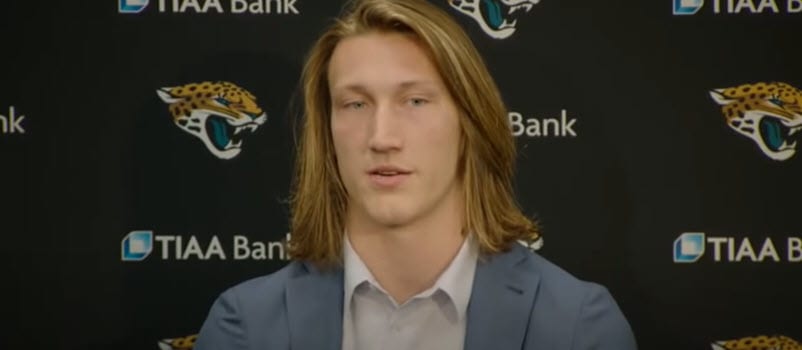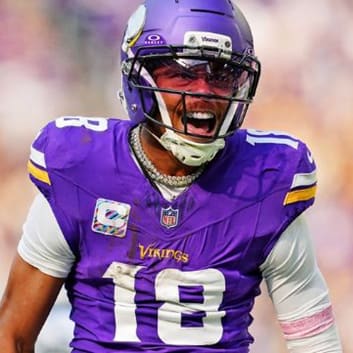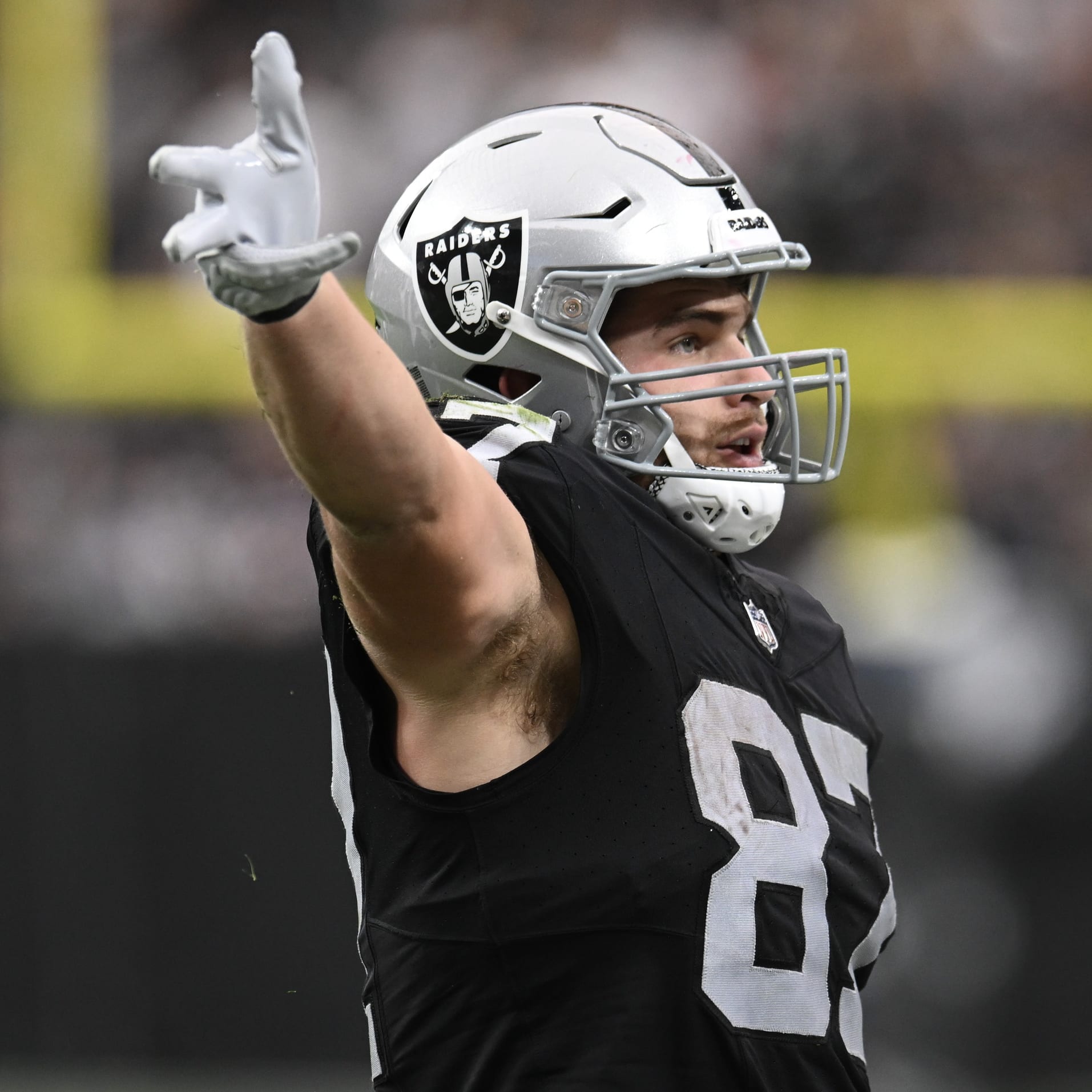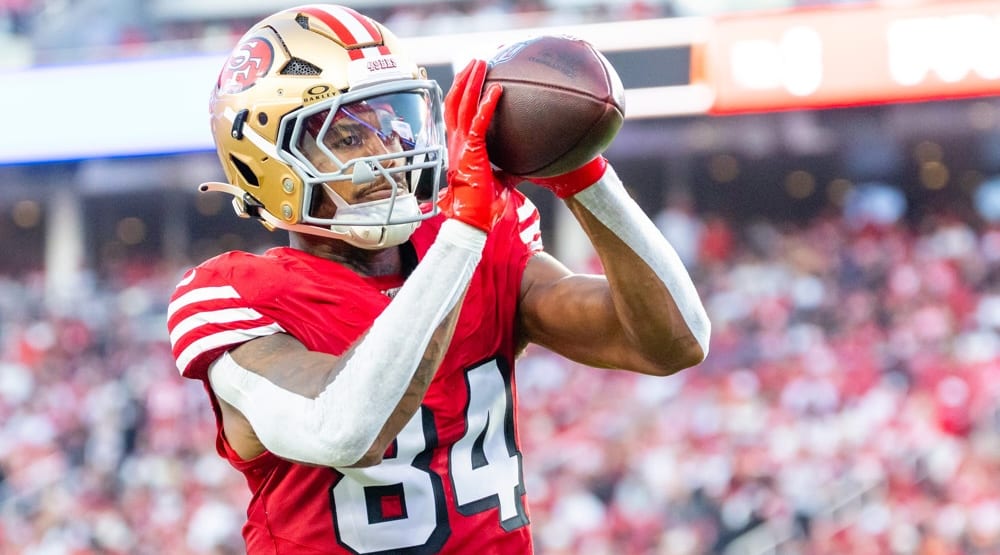Some fantasy football team stacks or pairings are valuable for obvious reasons – the coveted but elusive Patrick Mahomes-Travis Kelce-Tyreek Hill bundle doesn't need its value explained to anyone, for instance – but there are sometimes profit opportunities in the less obvious team stacks. This series will look at some offenses and break down the manner and extent to which they merit stack or pairing investments in Underdog Best Ball drafts.
To quickly clarify: stacking isn't in itself a guaranteed benefit for a team – the acquisition costs of the players involved have to be favorable in order for the structural advantage of a stack to pay off – so when drafting a team it's best to evaluate the player pool by overall value before considering team pairing angles in your draft strategy, especially in the early rounds.
The teams profiled are listed in no order. This article will look at Tennessee, Indianapolis and Baltimore. You can find the Underdog breakdown for Seattle, Buffalo and Miami here. You can read the breakdown for Tennessee, Indianapolis and Baltimore here.
I'll rate these teams and teams in upcoming articles by an extremely unscientific grading system that features the following designations: Highly Favorable, Favorable, Doable and Unfavorable.
Jacksonville
Travis Etienne (55.5 Underdog ADP)
D.J. Chark (71.7 Underdog ADP)
Laviska Shenault (75.1 Underdog ADP)
Marvin Jones (112.6 Underdog ADP)
Trevor Lawrence (124.4 Underdog ADP)
A disclaimer: I'm very high on the Jaguars offense at its current ADP, and the ADP it has seen all offseason. I'm heavily invested. I don't think it's a conflict of interest or anything for me to express my excitement over this collection of players – I intend to draft them more and would prefer no one get in my way! – but I need to give the fair warning anyway. It's possible that I'm just too high on them.
Trevor Lawrence is the best quarterback prospect the NFL has ever seen. That doesn't guarantee him much – a prospect can appear infallible and still fail in the NFL – but the odds have never been stronger for a quarterback to pan out as not just a viable NFL starter, but as a star quarterback. There's no useful comparison to think of. You have to look outside the sport, to a player like LeBron James, before you can quantify the kind of prospect capital Lawrence holds. He's incredibly sharp in terms of instincts and intelligence, and he's remarkably toolsy as well. Lawrence has shown the ability to do what very few players can in the most stressful conditions. If Lawrence's ADP is too low (I think it is), then it would follow that the pass catchers dependent on him would also be underpriced. There's an understandable caution many drafters hold toward rookie quarterbacks – even the best quarterbacks often struggle as rookies – but Justin Herbert showed last year that it need not always be the case. Lawrence boasts every strength that Herbert does, but to greater magnitudes and with the addition of new strengths that Herbert lacks entirely.
High as I am on Lawrence, I probably would have liked his top pass catchers almost regardless of their talent level. Luckily, all of D.J. Chark, Laviska Shenault and Marvin Jones have a lot going for them, and in varying functions. These three should all be at least good in 2021, and they each function in different parts of the field. That means that one's production need not occur at the expense of another. The question of which produces on a given day depends on where Lawrence is throwing the ball.
Chark will function the farthest downfield, which is to say he's the likely target if Lawrence makes a downfield throw. There is reason to believe Lawrence will make a lot of very good downfield throws, and in that capacity Chark has been highly effective the last two years despite a down 2020 season. Even in 2021, when Chark totaled 'only' 53 receptions for 706 yards and five touchdowns in 13 games, he was clearly playing well. In his 13 games the Jaguars completed 62.6 percent of their passes at 6.4 yards per attempt, which means Chark's catch rate of 57.0 percent – 5.6 points below the team baseline – is more than offset by his 7.6 YPT figure, which is 1.2 yards per target higher than the team baseline. All this occurred while working with Gardner Minshew and Mike Glennon, two quarterbacks who are especially bad at throwing to Chark's part of the field. Lawrence emphatically reverses that dynamic. If Chark can outplay the Jaguars offense with quarterbacks who can't throw his routes, then what can he do with Lawrence?
This pro-Chark propaganda isn't meant to take away from Shenault, who's in position to thrive with a near monopoly on the underneath game in this offense. And when Chark and Shenault are tangled up by the defense, Jones is likely to find a way to get loose. This is a coherent, balanced collection of receiver talents who are well-suited to burning the defense if it tries to sit on any one of the three in coverage.
The novel variable here is Travis Etienne, who I think is one of the most talented running back prospects of the past decade. Part of his talents have to do with the danger he poses as a pass catcher, which could theoretically cannibalize the passing game share secured by the receivers. I'm optimistic that Etienne can pay off without hurting any of those three receivers much, if only because the Jaguars might have the league's lowest level of tight end production. They have no talent at the position and Urban Meyer's Ohio State offenses never featured one in the passing game. As much as I think it makes sense to pick two of Chark, Shenault and Jones and pair them with Lawrence, I think Etienne could also push for 600 or so receiving yards this year and thus makes for a good match with Lawrence on a best ball squad.
Verdict: Favorable
Ideal stack: Trevor Lawrence + two of Travis Etienne, D.J. Chark, Laviska Shenault and Marvin Jones
Washington
Terry McLaurin (28.0 Underdog ADP)
Curtis Samuel (84.5 Underdog ADP)
Logan Thomas (109.4 Underdog ADP)
Dyami Brown (171.4 Underdog ADP)
Ryan Fitzpatrick (160.5 Underdog ADP)
Terry McLaurin is a straight up monster. There seem to be a lot of elite receivers in the NFL at the moment, and as a result McLaurin doesn't usually get immediate mention when the subject comes up. It would be a mistake to omit him, however – McLaurin is dangerous at all levels and now he gets what should be by far the best quarterback play of his career to this point with Ryan Fitzpatrick added in free agency.
Not just that, but Washington added an extreme speed boost at receiver by signing Curtis Samuel from the Panthers and drafting Dyami Brown in the third round – a pick where Brown never should have been available to them. Brown is clearly a better player than fellow third-round pick Josh Palmer, or second-round pick Tutu Atwell, both of whom went ahead of Brown. McLaurin will still see double teams, but the additions of Samuel and Brown will improve the overall health of the Washington offense, which will hopefully result in first downs on drives that would have instead fallen flat with Washington's 2020 personnel. With extended drives, McLaurin should get more chances at targets and targets closer to scoring position than in the past.
Samuel is a strong pairing target with McLaurin, a wideout duo as explosive as any in the league. Samuel enjoyed a strong 2020 season in Carolina with Teddy Bridgewater as his quarterback, but Fitzpatrick is much more inclined to throw downfield than Bridgewater, and Samuel is very dangerous downfield despite working as an underneath specialist for the Panthers last year. The rookie Brown, while a very good prospect, can't realistically compete for usage with a receiver as strong as Samuel. Brown's upside scenario would probably depend on an injury to Samuel, because he can't compete with McLaurin or Samuel outside and in the slot free agent pickup Adam Humphries could be a major obstacle.
Verdict: Doable
Ideal stack: Two of Terry McLaurin, Curtis Samuel and Logan Thomas + Ryan Fitzpatrick optional
Carolina
DJ Moore (40.5 Underdog ADP)
Robby Anderson (58.5 Underdog ADP)
Terrace Marshall (133.6 Underdog ADP)
Sam Darnold (189.6 Underdog ADP)
Dan Arnold (212.6 Underdog ADP)
DJ Moore and Robby Anderson were both valuable in 2020, averaging respectively 11.9 and 11.0 points in 0.5PPR scoring. That was with Teddy Bridgewater throwing just 15 touchdowns in 15 games, and with free agent departure Curtis Samuel drawing 11.6 points per game in 0.5PPR. Sam Darnold isn't guaranteed to be as good as Bridgewater, let alone better, but going from Adam Gase to Joe Brady could be a little like when Jared Goff went from Jeff Fisher to Sean McVay. That's not to make any direct comparison, but the point is Goff is regarded as one of the worst quarterbacks in the league now – he never needed to be good – yet he still went from one of the very least productive quarterbacks to throwing for 4,688 yards and 32 touchdowns the next year just because his situation improved drastically. Darnold might turn out a bum, but for now he's just a young former top prospect going to a much better situation.
As important as the Darnold detail might be, the question of replacing Samuel is similarly important for the viability of this stack. Samuel played mostly in the slot and mostly underneath in 2020, but it's not clear if the Panthers will require the slot position to mostly run underneath again in 2021. Terrace Marshall was a superb selection in the second round and might be the most likely replacement for Samuel in terms of snaps, but Marshall isn't much of an underneath player and is generally better used as a downfield and sideline threat. The Panthers could replace a lot of Samuel's 2020 reps by moving DJ Moore inside, where he very rarely played last year. The Panthers for some reason almost exclusively used Moore outside and downfield in 2020, but he's exceptional on short routes after the catch, and he also has a history as a standout ballcarrier. If so, Moore would likely succeed in that capacity and boost his target volume by securing low-difficulty routes that instead went to Samuel last year. If Moore gets more work underneath and Marshall is the third receiver, that would almost necessarily mean Marshall takes up some of Moore's 2020 downfield workload, a scenario that would perfectly suit the interests of both players and thus enhance the upside scenario of this passing game stack.
Good of a prospect as Marshall is, it's also possible that the Panthers mean to replace Samuel with a committee approach rather than offering a clear third stacking target after Moore and Anderson. "Tight End" Dan Arnold is basically just a big slot receiver, and it's easy to imagine the Panthers using him in the red zone especially. David Moore – who I'm omitting as a stack candidate here, right or wrong – is another player who could pitch in quality reps where Samuel ran last year. Quite pertinently, David played a role in Seattle last year that was fairly similar to Samuel's in Carolina, and David did well in that role, too. Marshall has undeniable talent and is likely a long-term steal for the Panthers, but Arnold and David are competent veterans fighting for reps at the same position. Marshall is at once a justifiable pick at ADP with obvious upside and a player who should probably have a lower exposure cap in your portfolio than Moore or Anderson.
Verdict: Doable
Ideal stack: Two of DJ Moore, Robby Anderson and Terrace Marshall + (optional) Sam Darnold






































